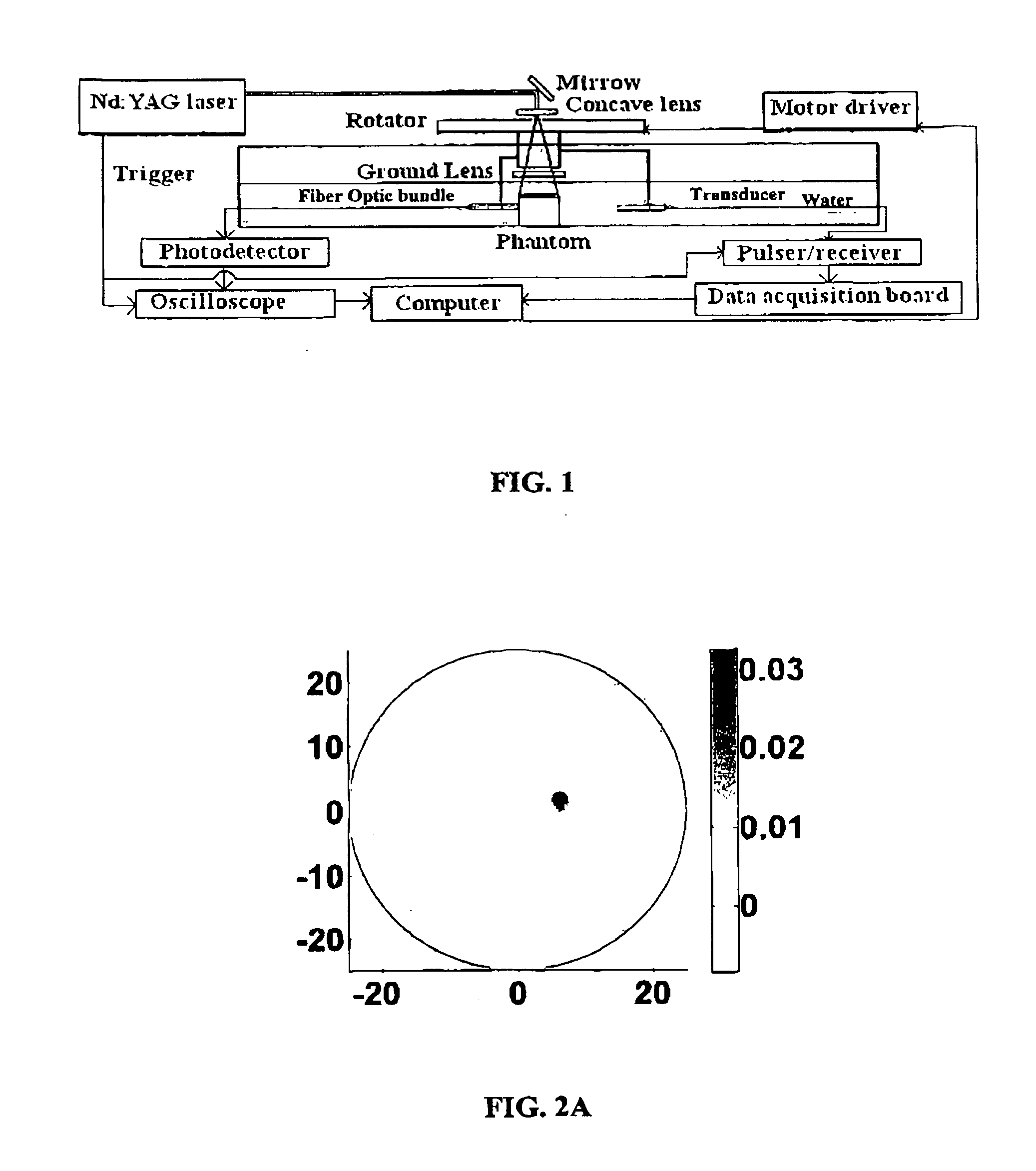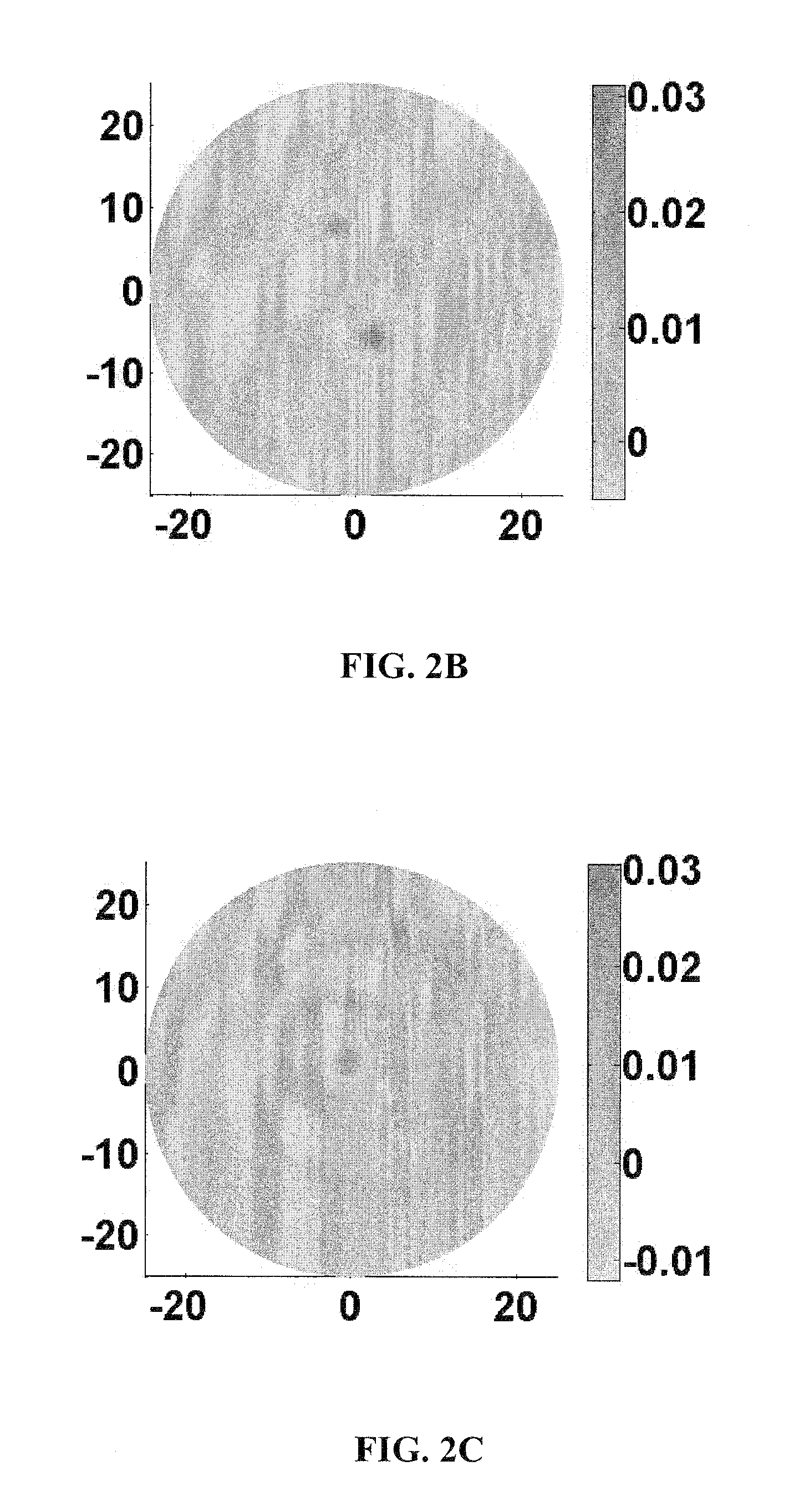Method and Apparatus for Tomographic Imaging of Absolute Optical Absorption Coefficient in Turbid Media Using Combined Photoacoustic and Diffusing Light Measurements
a technology of optical absorption coefficient and tomography, which is applied in the field of tomography imaging of absolute optical absorption coefficient in turbid media, can solve the problems of difficult to accurately obtain these initial parameters, difficult for such methods to tackle the negative absorbed energy density value, and limit the application of these methods, so as to improve the spatial resolution of dot, improve diagnostic decision-making accuracy, and improve the spatial resolution
- Summary
- Abstract
- Description
- Claims
- Application Information
AI Technical Summary
Benefits of technology
Problems solved by technology
Method used
Image
Examples
Embodiment Construction
[0023]Embodiments of the disclosure pertain to a method and apparatus for imaging a light absorption coefficient distribution. Embodiments of the subject method can be implemented without knowing the strength of incident light in advance and without requiring careful calibrations in the non-scattering medium. Embodiments of the method can combine conventional photoacoustic tomography (PAT) with diffusing light measurements coupled with an optimization procedure based on the photon diffusion equation. Images of absorbing targets as small as 0.5 mm in diameter embedded in a 50 mm diameter background medium can be quantitatively recovered. Small targets with various optical contrast levels relative to the background can be detected well.
[0024]Embodiments can be utilized to image human, or animal, tissue. Specific embodiments involve imaging of a breast, the brain, a joint, and endoscopic imaging of the GI tract, colon, or esophagus.
[0025]Embodiments of the subject reconstruction method...
PUM
 Login to View More
Login to View More Abstract
Description
Claims
Application Information
 Login to View More
Login to View More - R&D
- Intellectual Property
- Life Sciences
- Materials
- Tech Scout
- Unparalleled Data Quality
- Higher Quality Content
- 60% Fewer Hallucinations
Browse by: Latest US Patents, China's latest patents, Technical Efficacy Thesaurus, Application Domain, Technology Topic, Popular Technical Reports.
© 2025 PatSnap. All rights reserved.Legal|Privacy policy|Modern Slavery Act Transparency Statement|Sitemap|About US| Contact US: help@patsnap.com



